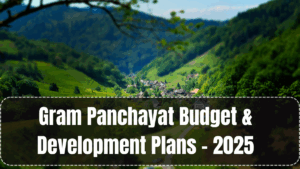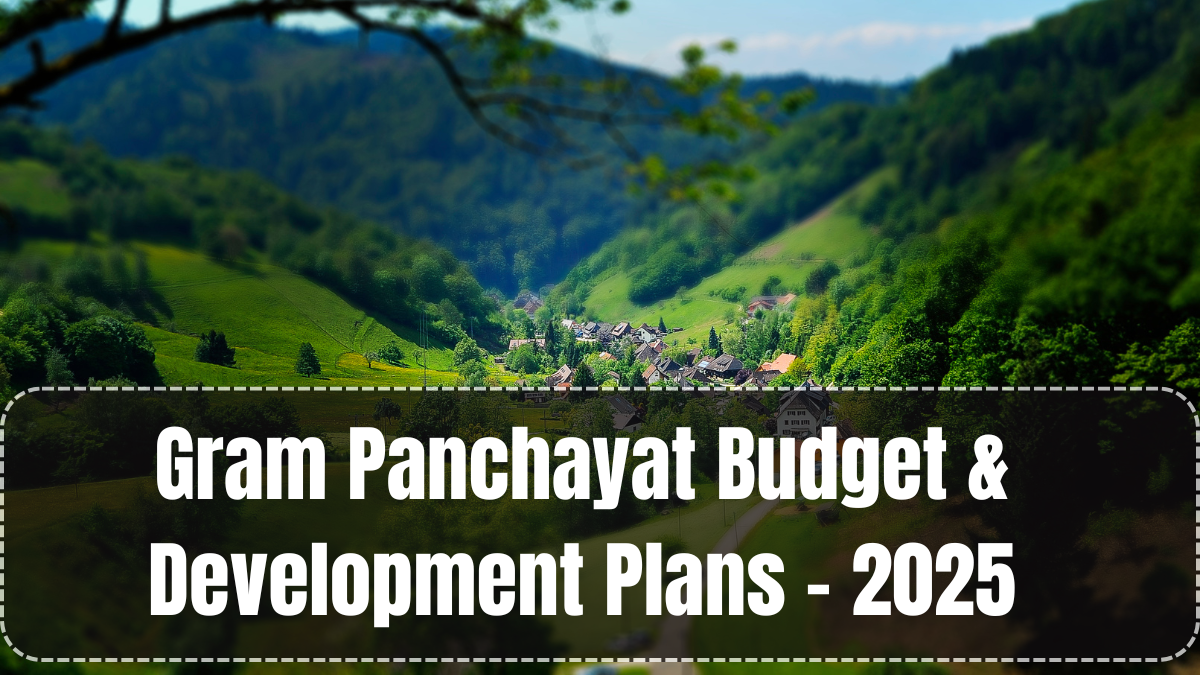The Gram Panchayat Budget 2025 has brought a renewed focus on grassroots development across rural India. With enhanced allocations, transparent fund usage, and a push for digital inclusion, Zilla Parishads (ZPs) across states have laid out structured plans that address core issues like road connectivity, sanitation, skill training, and sustainable livelihoods. This year’s budget is not just about numbers — it’s a roadmap for rural empowerment through decentralized planning and real-time monitoring.
From infrastructure to innovation, 2025 marks a turning point where rural governance is aligning closely with state development goals, Panchayati Raj reforms, and citizen-centric delivery models.

Increased Fund Allocation for Basic Infrastructure
One of the major highlights of the Gram Panchayat Budget 2025 is the sharp increase in allocations for core infrastructure in villages. On average, each panchayat has seen a 20–25% increase in funding compared to last year. The focus areas include:
-
Construction and repair of rural roads and culverts
-
Expansion of tap water connectivity under Jal Jeevan Mission
-
Street lighting powered by solar energy
-
Establishment of waste management units and community toilets
States like Maharashtra, Karnataka, and Odisha have already announced state-wise budget splits that prioritize tribal and underserved regions.
Digital Panchayat and Real-Time Budget Tracking
In 2025, transparency and digital accountability are key themes. The Ministry of Panchayati Raj has rolled out e-Gram Swaraj 2.0, an updated portal where all Gram Panchayat financial transactions, tendering, and development plans are uploaded live.
Features of this digital system include:
-
Mobile access for citizens to view real-time budget spending
-
Geo-tagged progress photos for ongoing projects
-
Online approvals for contractor payments and vendor selection
-
Integration with PFMS (Public Financial Management System)
The move aims to reduce fund leakages, speed up project implementation, and allow gram sabhas to review and question decisions made by their elected bodies.
Employment & Skill Development Initiatives
A significant chunk of the Gram Panchayat Budget 2025 is directed towards employment schemes. The revised guidelines under MGNREGA now include skill-based employment and self-employment options. New additions include:
-
Skill hubs in villages linked with government ITIs and Polytechnics
-
Seed funding for SHGs (Self Help Groups) to start small businesses
-
Training centres for digital skills, tailoring, agro-processing, and solar repair
-
Gram Panchayat internships for rural youth interested in public administration
States like Bihar and Chhattisgarh have set specific targets to train 1 lakh+ rural youth by the end of 2025 under ZP partnerships.
Focus on Health, Education & Women Empowerment
2025 budget plans also include dedicated funds for women-led initiatives, child nutrition, and rural healthcare. Important budget allocations are:
-
Upgradation of Anganwadi Centres with digital learning tablets
-
Construction of health sub-centres and mobile clinics for remote panchayats
-
Distribution of menstrual hygiene kits through schools and SHGs
-
Nutritional gardens in schools under the Poshan Abhiyan scheme
These development projects reflect a more holistic approach by the Gram Panchayats, covering not just infrastructure but also social welfare.
Green & Sustainable Village Projects
Environmentally sustainable rural growth is a priority in the Gram Panchayat Budget 2025. New policies encourage panchayats to create climate-resilient infrastructure and promote green jobs. Key initiatives include:
-
Afforestation drives along village boundaries and roads
-
Promotion of organic farming practices
-
Building of rainwater harvesting systems
-
Setting up biogas units for cooking fuel in tribal belts
Panchayats achieving 100% segregation of waste and zero plastic usage are also being awarded additional funds under state-led performance incentive schemes.
ZP Monitoring & Community Participation
The success of the 2025 plans depends on grassroots participation. Zilla Parishads are now required to conduct monthly meetings with gram panchayat heads, women representatives, and youth volunteers. Tools like Jan Sunwai (public hearings) and social audits are now mandatory for large projects.
This participatory governance model ensures that citizens are no longer passive beneficiaries — they are involved in planning, monitoring, and evaluating development efforts.
FAQs
What is the total increase in the Gram Panchayat Budget 2025?
Most Gram Panchayats have seen a 20–25% increase in annual budgets compared to 2024, focused on infrastructure and welfare.
How is the 2025 budget ensuring transparency?
Through platforms like e-Gram Swaraj 2.0 and PFMS, all transactions and project statuses are uploaded in real-time for public access.
Which sectors are prioritized in the 2025 budget?
Key sectors include rural roads, drinking water, education, health, women’s empowerment, skill development, and climate resilience.
Are citizens involved in budget planning?
Yes. Gram sabha meetings, social audits, and Jan Sunwai hearings ensure that villagers contribute to budget planning and monitoring.
What new employment programs are included in the 2025 plans?
Skill hubs, digital training centers, and SHG support for entrepreneurship have been added alongside MGNREGA employment projects.
Click here to know more.
